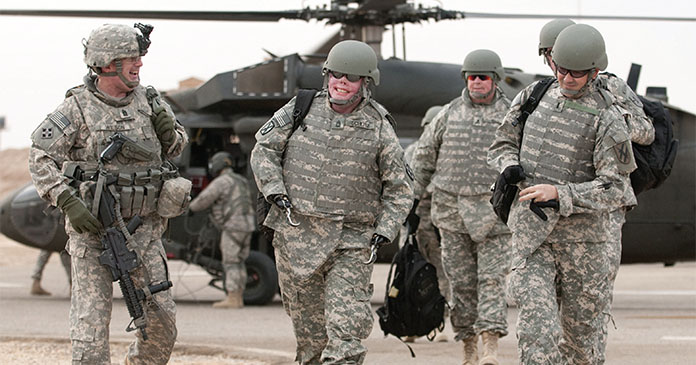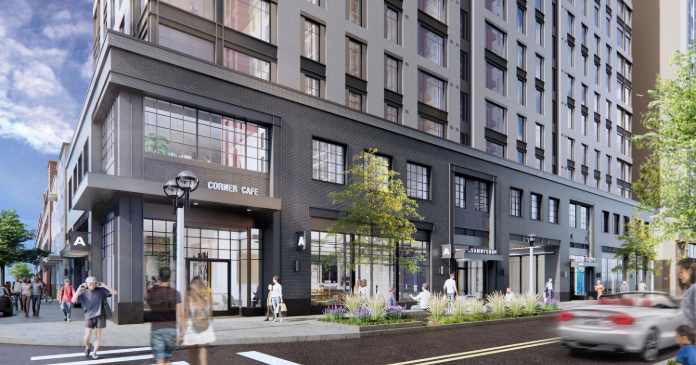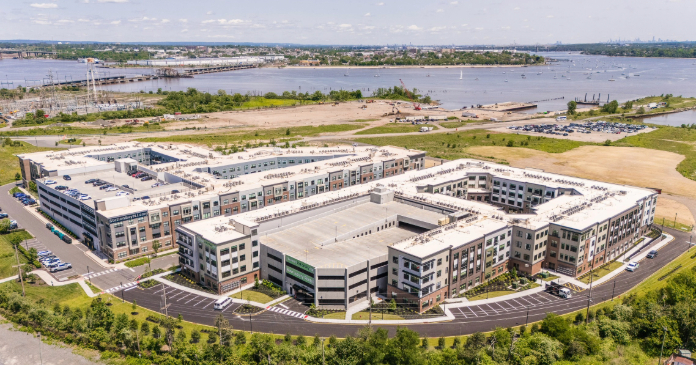
It then describes the qualifications to become a member of our nation’s military elite: “a focused, agile mind, astute awareness, physical toughness. That’s what it takes to be part of the Army Special Forces.”
Within each branch of the military, 3 to 5 percent are elite warriors in special recognition. For the Army, the Green Berets, Night Stalkers and Rangers make up their elite forces; while the Navy has the Seals; the Air Force holds their Air Commandos in high esteem; and for the Marines it’s Special Operation Command. All teams are trained to perform high-risk missions that conventional units cannot perform.
Sam Raia, the principal and executive officer for Raia Properties Corp. in Ramsey, N.J., holds a deep respect and heartfelt affinity for this exclusive group.
Actions speak louder than words and in December, 2010, Raia founded Homes Fit for Heroes, an approved 501c3 charity that provides housing for the severely-wounded returning home.
“If I can live my life with my family, in freedom, because of the sacrifices by these guys, then why not?” he says when asked about his incentive to create such an enterprise. “It began in New Jersey September 11, 2001. My college roommate, Patrick Aranios, died in the South Tower. I wanted to do something, but didn’t know how.”
As fate would have it, Raia read Lone Survivor, by Marcus Luttrell, an account of a Seal team member returning from Afghanistan after being injured. In addition to a gripping account of the young Seal’s life, his hometown builds him a house upon his return.
“We can’t do that,” says Raia, “but this was the next best thing.”
Working in conjunction with the USSOCOM, U.S. Special Operations Command, home of Care Coalition, Raia also reached out to multifamily associates for help with the cause. USSOCOM’s mission is to provide Special Operation Force warriors and their families an advocacy program to enhance their quality of life. Central to this mission is their support for the SOF Wounded, Ill, and Injured Warriors and their families.
“We were delighted when Sam contacted us,” says Lieutenant Brian Hower, medical service corps officer, Navy, and benevolent liaison at the USSOCOM. “We immediately connected him with service members and families in the most need of this type of assistance. His contributions have greatly contributed to the overall wellness of our special operators, rehabilitating from combat inflicted injuries.”
The board of directors for Homes Fit for Heroes reads like a who’s who of real estate and include real estate brokers, ARA and CBRE, and management companies, Walter Embry and Mark Fogelman.
Presently, the organization has 25 active units, five directly from Raia’s portfolio, at a per-unit operating-value of approximately $2,000-per month including utilities. Such donations are not eligible for any type of tax shelter, and contributors typically donate use of the apartments for approximately eighteen-months, free-of-charge to the qualifying veteran. This is usually enough time for the veteran to physically recover, and get a bearings on their next step in his/her life.
“The economics are easy with vacancies at 3 to 5 percent in most markets,” says Raia. “Asking for a contribution of an empty apartment on the first floor hasn’t been difficult for us to obtain. We appreciate the industry coming together for this cause. They’ve made the whole process rather simple.”
Specifically, Homes Fit for Heroes needs apartments near major military hospitals, such as The Center for the Intrepid, Brook Army Medical Center, San Antonio, Texas, and Walter Reed, Bethesda, Md. The intent of the program is not only to provide a place for these returning heroes to stay through rehabilitation, but also a place that they can be with their families.
Military medical care is generally split into these two sites, east and west, and both world class centers support medical rehabilitation of amputees and burn victims.
The Center for the Intrepid, founded in 2007, was specifically built to support soldiers from Iraq and Afghanistan. Near Walter Reed, the Army’s flagship medical hospital, in Bethesda, Md., the rental market is expanding rapidly, limiting the available two- and three- bedroom rentals this program requires.
“I have a returning vet who is a triple amputee,” says Raia. “If all goes according to plan, he will be out of the hospital by late summer. He will need a home, and we can’t find a unit.”
Raia adds, “These guys are first in, and the last out. They are professional soldiers, family men and an average 31-years-of-age. These very special, elite warriors are highly-trained, less apt to post traumatic stress syndrome, and referred by the U.S. Special Operation Command or Care Coalition Advocates. They are stable, top-shelf guys just needing a break.”
The typical type of veterans participating in Homes Fit for Heroes are amputees hit by an IED (Improvised Explosive Device), or road side bomb. These brave men are medically-treated at the fire fight, transferred to Germany, and back to the U.S. where they are treated by the Air Force Special Operations Command. Ninety-five percent survive their injuries. “They save lives in extraordinary ways,” recounts Raia.
Eighteen months ago, Levi Rodgers, Green Beret in the U.S. Army, entered the medical recovery program at the Center for the Intrepid in San Antonio after an IED blew up the military vehicle, he, his commander, and four members of his squad were driving. His extreme injuries include severe burns, fracturing nearly every bone with exception of his arms, and head trauma. His doctors placed him in an intentional coma for two months.
Sadly, the others in his vehicle did not survive the incident.
Homes Fit for Heroes arranged for housing for his wife and two children, near the hospital during his extended hospital stay, and now during his on-going rehabilitation.
“Today’s soldiers are not the castings of a movie, but real guys with real families,” says Chief Warrant Officer Rodgers. “I coached football, owned a backyard and a dog. I have a wife and two beautiful kids. When I woke up in the hospital, among the first things I learned was that my family was living, together, in an apartment nearby.” He continues, “Sam and the foundation put my family in a home, rather than a hotel. That means the world to me.”
Finding these returning warriors a home close to the treating hospital is not just a condition of convenience for them and their families, it contributes to their positive emotional state, and speeds their recovery and healing by lifting this burdon from their shoulders. Allowing the family to remain intact and nearby, while removing the added financial burden of owning a home elsewhere, creates a supportive environment where these vets need only think about one thing: full recovery and seamless entry back into productive lives as husbands, sons and fathers.
Fortunately, there are a number of housing support programs available for the returning wounded soldier, both government-supported and via private institutions, such as the Fisher House.
Homes Fit for Heroes’ differentiation is that it is intent on keeping the family together, and nearby, during the soldier’s full recovery and re-entry into society.
“To our guys, it’s not just an apartment,” says Rodgers. “It’s a force in fighting the war.” He continues to explain that when he, and others, enlisted for active combat, there is a confidence that he, and his family, will be cared for, no matter what happens. “I know I can take solace in coming home, no matter what. It makes us better fighters,” shares Rodgers’ as his voice reflects his passion for his career, and dedication to the military. “It sends a great message to the younger guys, that we care for our own. It’s just a great thing.”
Today, Homes Fit for Heroes is a fully volunteer-based organization, and on-going financial support is needed. This year’s charity golf tournament raised $65,000, which will be used to pay for utilities, welcome baskets, medical procedures, rent and utilities. Raia’s own financial contributions have facilitated much of the effort, but he’s also covered a number of the extras. For example, there is a returning soldier who needed hyperbaric chamber therapy for a simultaneous head and leg injury. Such injuries are not covered by prescribed governmental insurance.
“When I heard he needed $1,500, and it was literally the difference of being confined to a wheelchair or walking again, giving that money was a no-brainer,” said Raia.
“One day we might be able to close the foundation, that is, when our boys aren’t being blown up by the bad guys,” says Raia. For now, housing units are needed near the Athletic Performance Center in Pensacola, Fla. The need is for soldiers in recovery, being retrained to their original performance and strengths, prior to being redeployed.
“I can only dream that we might secure a couple apartments in Myrtle Beach or Orlando, where our soldiers can take their families for a vacation during their tenure in our housing program.” What a gracious gift, for those who are gracious enough to give their lives in service of their country.
Author Lisa Benson














